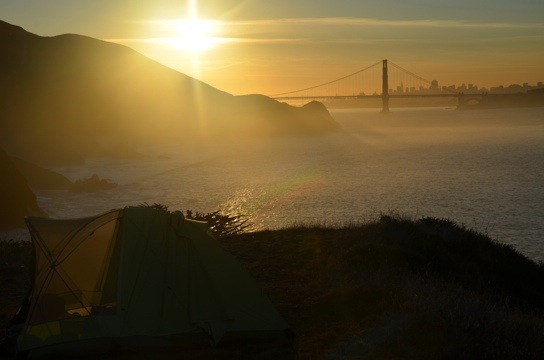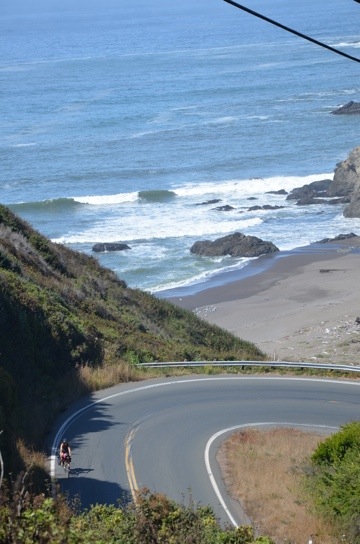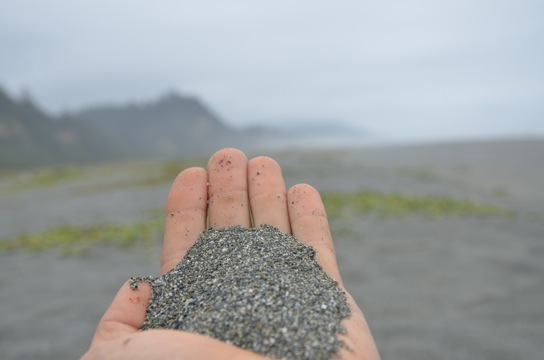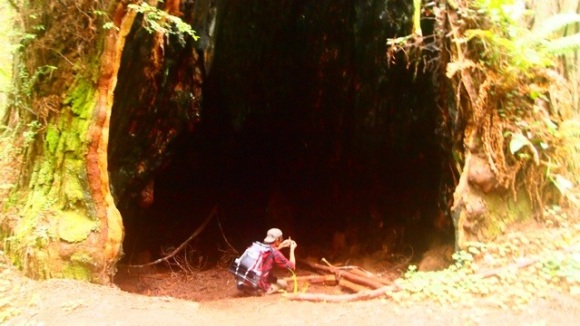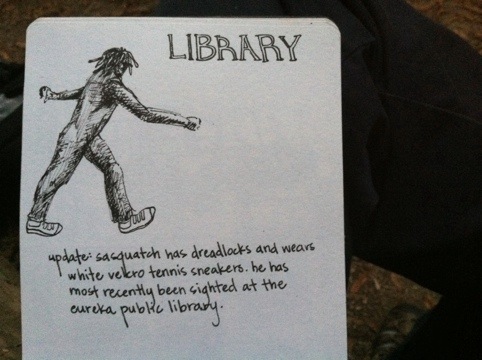When you travel with a purpose, when you ask lots of people questions to spark roadside/fireside/marketside/toiletside/yougetthepointside conversations around a theme that you care about, it’s impossible not to start noticing patterns, spotting trends, breathing connections. Your brain starts to zip around in a zillion different directions connecting one experience to another, these words to those ideas, his message to her actions… I visualize sparks flying. I visualize a spiderweb forming around the places we’ve been, grabbing people, schools, unschools, straw-clay houses, bicycles, gardens, and maybe a few of those pesky raccoons. I visualize a gazillion messages from a gazillion very different people linking like quirky little puzzle pieces and morphing into a larger picture.
The puzzle Brandon and I sought on our tour was around education – what it is now, what it should be, and what “success” and “learning” mean to different people. The image that I now visualize is no grand epiphany, no stroke of rocket science, but crystal clear nonetheless. I want you to visualize it with me so let me toss you a few puzzle pieces.

Michael is one of the newest arrivals to Ionia, an intentional community we visited in Alaska. He is 3. He likes trampolines, squirrels (which he pronounces “koyal”), and hitting you with a wooden spoon. He dislikes pants, feeling small, and having his face wiped off. When Michael turns 5, he won’t go to kindergarden, he will continue to play, explore, wander, and grow at Ionia without formal schooling, unless he asks for it. The community (about 40 people) will help him learn what he wants to know as he demands it.
At the Purple Thistle Center in Vancouver, BC, tweens, teens, and early-20-somethings gather to reclaim plots of unused city land and plant food gardens there. The co-founder, Matt Hern, drives us to another part of town to salvage cardboard from strip-mall dumpsters to bring back to the crew. As the group digs and lays cardboard, they talk about their plans for the garden, how the food can be made accessible, city-politics, and what’s going on tonight…
 I recently read this article is about a school called Unitierra. It says “Our ‘students’ do not belong to communities. They are their communities. Of course, they can enjoy themselves and have very long nights of pachanga and many fiestas. But they have a responsibility to their communities, that is, to themselves.”
I recently read this article is about a school called Unitierra. It says “Our ‘students’ do not belong to communities. They are their communities. Of course, they can enjoy themselves and have very long nights of pachanga and many fiestas. But they have a responsibility to their communities, that is, to themselves.”
City Repair in Portland, OR is bringing city residents together to reclaim public spaces where neighbors can interact. They are covering neighborhood intersections with giant murals and sometimes gardens to re-instill the age-old tradition of people talking when their paths converge. Mark Lakeman, the founder, believes that when communities reclaim public spaces, ages, races, professions, ideas, and stories collide… a pretty powerful learning experience for all.
This TED talk about the Barefoot College movement… pretty nifty.
In Arcata, CA we were hosted by the Campus Center for Appropriate Technology. We participated in their weekly volunteer day, where heaps of students come together to lend their hands and minds to improving the CCAT (educational) space for all: building structures, planting things, making artsy signs, cleaning up the space, and sharing food and stories.

We met Werner and Lotti, a retired, bike-touring Swiss couple, for the first time on the Washington Coast. They invited us to their campfire one cold night and we spent hours asking them questions about their lives. On “success”, Werner, a retired Swiss banker, said, “When I was working, success was to climb up the ladder and get in a good position. But later I found it more successful when we made enough money to stop working and we changed our life completely. […] we do a different way of life now. We travel. We don’t spend as much money as we did before. We are much more happy now.” We ended up running into Werner and Lotti in many different places along the coast. We think they’re pretty badass for doing a six month bike tour at their age. We call them our bike parents.
I could go on and on with the snippets, but I think you get the point…
More and more people are recognizing that education is embedded in – and even synonymous with – community. And it makes a whole lotta sense. When we are surrounded by a diverse community of people (not just the ones we are grouped with in school because of our age) we have the potential to learn a lot from each other. The transfer of knowledge is vast and ever-unfolding. We share stories, skills, and experiences. We challenge and give depth to each other’s ideas. We get more creative. We are all teachers and we are all students. Our actions have real world relevance and are held accountable by people that will be with us long after school lets out for summer.
Most schools still run on the principle that kids learn best when they are removed from their home communities, grouped with kids their own age, and seated indoors for 6 hours a day to do what the teacher tells them to do. But PEOPLE (you, me, those kids, many of their teachers, and oodles of folks that we met along the bike tour) know that “real life” is more diverse, more complex, more evolving. Many alternative schools are recognizing (or starting to recognize) the importance of community in different ways. Sudbury schools, for example, create democratic communities by removing grade levels and allowing full “age-mixing” between students of all ages and stages. And I’ve been swooning over the philosophy of the Puget Sound Community School in Seattle (thump thump).
Bicycle touring has been a new exercise in community for me. I always used to think of community as something that was attached to a place – a home, a school, a church. But when you tour, there are lots of people that you see over and over on the road and at (large, shared, cheap) hiker/biker campsites… and when you meet, everyone is fascinated by one another. “Where did you start your tour? Where are you going? What did you think of that hill into ____ville? Did you see that RV practically riding the shoulder? Ridiculous! Did you catch that view point with the sea lions on the cliffs? You look young… what’s your story?” Most nights that we camped at sites with other cyclists, we offered or were invited to share a campfire, so stories were shared, wisdom imparted, and relationships deepened (Verner and Lotti, for example, became great friends and teachers).
When we stop thinking of “education” and “life” as separate entities, divided by concrete walls and diplomas, we begin to see and grow from the wealth of opportunities imparted by the “teachers” of our own diverse communities.




